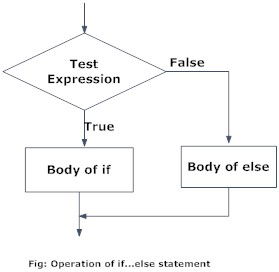Python If-else statements
Decision making is the most important aspect of almost all the programming languages. As the name implies, decision making allows us to run a particular block of code for a particular decision. Here, the decisions are made on the validity of the particular conditions. Condition checking is the backbone of decision making.
In python, decision making is performed by the following statements.

Indentation in Python
For the ease of programming and to achieve simplicity, python doesn't allow the use of parentheses for the block level code. In Python, indentation is used to declare a block. If two statements are at the same indentation level, then they are the part of the same block.
Generally, four spaces are given to indent the statements which are a typical amount of indentation in python.
Indentation is the most used part of the python language since it declares the block of code. All the statements of one block are intended at the same level indentation. We will see how the actual indentation takes place in decision making and other stuff in python.
The if statement
The if statement is used to test a particular condition and if the condition is true, it executes a block of code known as if-block. The condition of if statement can be any valid logical expression which can be either evaluated to true or false.

Syntax of if...else
if test expression:
Body of if
else:
Body of elseThe if..else statement evaluates test expression and will execute the body of if only when the test condition is True.
If the condition is False, the body of else is executed. Indentation is used to separate the blocks.

